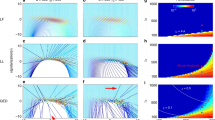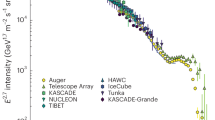Abstract
THE recent work of Millikan (Science, 62, 444, 1925) has added to our list of radiations, some of far shorter wave-length than any hitherto discovered. By extrapolation of A. H. Compton's formula for absorption (Phys. Rev., 21, 483, 1923), it has been estimated that these new rays have a range of wave-lengths between 0.0004 and 0.00067 Ångström. (Had the analogous formula developed by Jauncey (Phys. Rev., 22, 233, 1923) been used, the values would have been between 0.0022 and 0.0029.) It is suggested in Millikan's article that “the computed frequencies of these rays also correspond closely to the energy involved in the simple capture of an electron by a positive nucleus”.
This is a preview of subscription content, access via your institution
Access options
Subscribe to this journal
Receive 51 print issues and online access
$199.00 per year
only $3.90 per issue
Buy this article
- Purchase on Springer Link
- Instant access to full article PDF
Prices may be subject to local taxes which are calculated during checkout
Similar content being viewed by others
Author information
Authors and Affiliations
Rights and permissions
About this article
Cite this article
HUGHES, A., JAUNCEY, G. Radiation arising from the Mutual Annihilation of Protons and Electrons. Nature 117, 193–194 (1926). https://doi.org/10.1038/117193a0
Issue Date:
DOI: https://doi.org/10.1038/117193a0
Comments
By submitting a comment you agree to abide by our Terms and Community Guidelines. If you find something abusive or that does not comply with our terms or guidelines please flag it as inappropriate.



